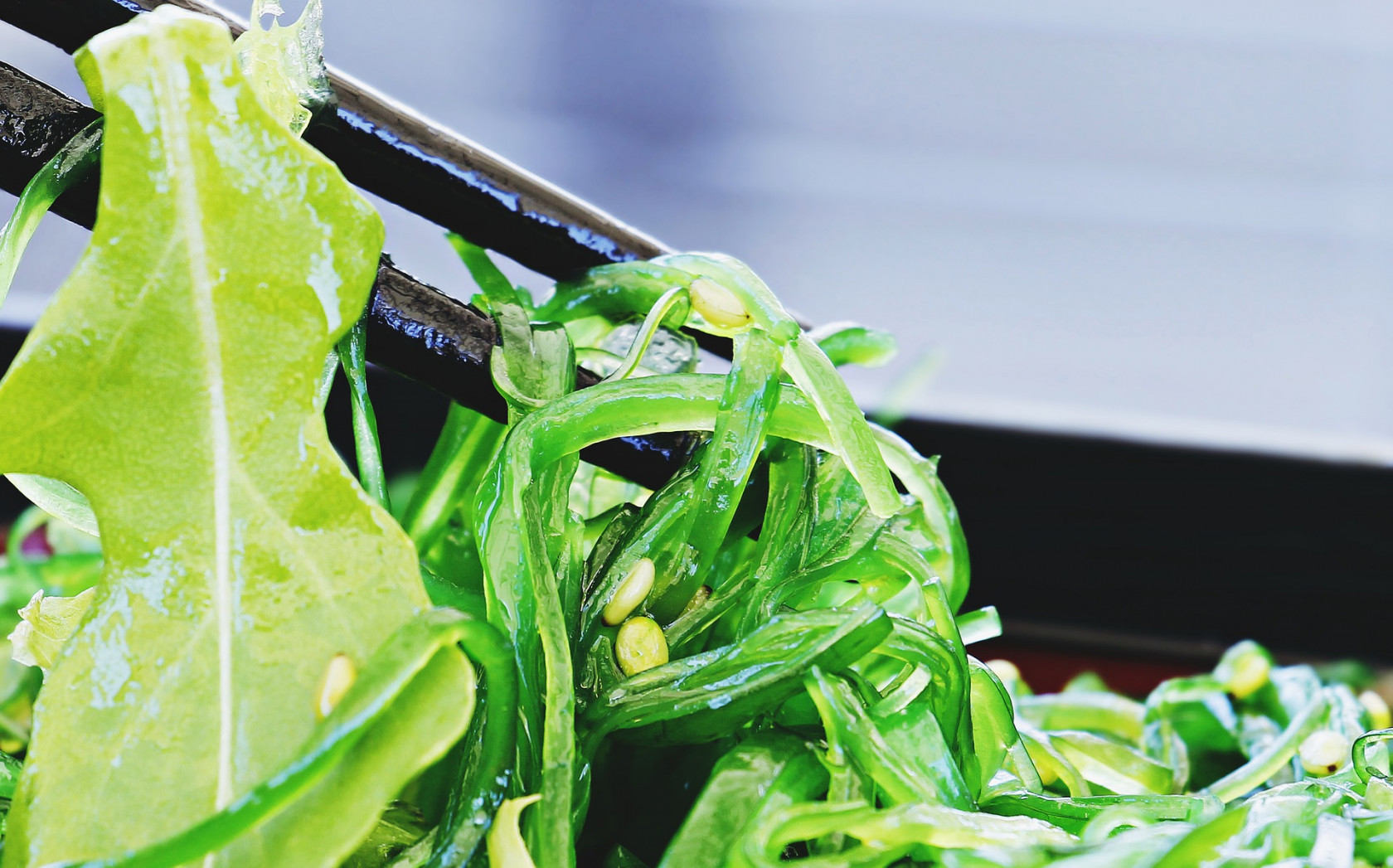Wakame
Wakame (Undaria pinnatifida) is a green algae that grows in sea water with a distinctive flavor and texture. It is one of the three most common seaweed varieties in Japan and is commonly grown in Japan and Korea. Wakame can be eaten raw as well as added to soups, stir fry dishes, salads, and other Asian foods.
Wakame is rich in nutrients. It is a good source of Omega-3 fats, Iodine, Manganese, Folate, Magnesium, Calcium, Copper, Riboflavin (B2) and Iron.
It is widely used in Continental and Asian cuisines. Wakame grows naturally on rocky shores of seas and oceans around the world.
Cultivating and Harvesting
Large scale and commercial cultivation of this seaweed is followed in parts of Asia, Europe and the Americas along the sea coast. It is cultivated in seaweed farms where shore emerges above seawater during low tides and submerges under the water at the time of high tides.
They also grow naturally in abundance along these coastlines. Harvesters generally harvest them from their natural habitat. The best time to harvest is at low tide. Harvesters wade into the shallow waters and cut the sea weed.
Harvesting is done using using scissors or garden clippers. Pulling of the seaweed from the base is not recommended. Harvesters cut off only about half the size of the seaweed. This allows Dulse to grow back.
Usually, after a big storm, piles of fresh seaweed are washed ashore. Harvesters collect these and use them for food.
Consuming and Storing Wakame
Wakame has a distinctive taste and flavor. It can be eaten raw. It is normally dried or roasted and packed for commercial uses. It is mostly added to vegetables, soups, stocks, grains, beans, or stew dishes. It can also be pickled or deep-fried.

